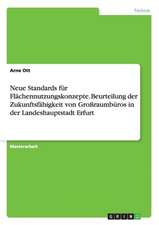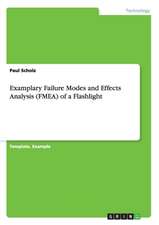The Handbook of Fatigue Management in Transportation
Editat de Ashleigh J. Filtness, Christina M. Rudin-Brownen Limba Engleză Paperback – 30 ian 2025
Preț: 622.48 lei
Preț vechi: 732.33 lei
-15% Nou
Puncte Express: 934
Preț estimativ în valută:
119.18€ • 122.26$ • 100.34£
119.18€ • 122.26$ • 100.34£
Carte nepublicată încă
Doresc să fiu notificat când acest titlu va fi disponibil:
Se trimite...
Preluare comenzi: 021 569.72.76
Specificații
ISBN-13: 9781032081441
ISBN-10: 1032081449
Pagini: 580
Dimensiuni: 156 x 234 mm
Greutate: 0.83 kg
Editura: Taylor & Francis Ltd.
ISBN-10: 1032081449
Pagini: 580
Dimensiuni: 156 x 234 mm
Greutate: 0.83 kg
Editura: Taylor & Francis Ltd.
Cuprins
Section 1. Fatigue science and transportation. 1.1. Toward a More Precise Definition of Fatigue. 1.2. Measuring operator fatigue and sleepiness. 1.3. Challenges in fatigue research and enforcement. 1.4. The Effects of Fatigue on Performance in Transportation Operations. 1.5. A practical Human Factors method for developing successful fatigue countermeasures. Section 2. Fatigue-related Consequences in Transportation. 2.1. Fatigue-related consequences on road crashes. 2.2. Fatigue risk in Great Britain’s railway industry. 2.3. Awakening to the Challenge of Fatigue Management in Maritime Transportation. 2.4. Fatigue-related consequences in Aviation. 2.5. Telling the story: How and why investigating for fatigue can improve safety in transportation operations. 2.6. Fatigue’s effects on occurrence survivability. 2.7. Regulatory and Legal Frameworks for Managing Fatigue in Transportation. Section 3. Factors to Contribute to Fatigue and Sleepiness in Transportation. 3.1. Sleep Pressure and Circadian Rhythms. 3.2. Jet Lag, Sleep Timing, and Sleep Inertia. 3.3. Sleep disorders and driving. 3.4. Task-related causes or contributors to fatigue and sleepiness. 3.5. Lifestyle as a mediator of fatigue and sleepiness. Section 4. Managing Fatigue and Promoting Alertness in Transportation. 4.1. Approaches to Fatigue Management: Where We Are and Where We’re Going. 4.2. Rules resistance: The inequitable trade, missing logical links and solutions to surmount the challenge. 4.3. Work scheduling – Biomathematical modelling for fatigue risk, and its role in fatigue risk management processes. 4.4. Fatigue risk thresholds. 4.5. Fatigue profiling: An approach to understand occurrence, causes and effects of fatigue in people working in different transport sectors. 4.6. Fatigue detection technology. 4.7. Individual Countermeasures to Fatigue. 4.8. Light as a countermeasure to sleepiness and its potential for use in the transport industry. 4.9. It takes two: Health management and its interface with fatigue. 4.10. Aircrew fatigue and scheduling – a summary of some recent studies using the same outcome measure. 4.11. Fatigue management education for young novice drivers. Section 5. Transportation Fatigue Risk Management in Practice. 5.1. Tram Operations Limited - Insights from our journey to improve fatigue and wellness management.. 5.2. Assessing railway traffic controller safety with an hourly risk index. 5.3. Rail transport: Lessons learned in implementing a sleep apnoea assessment program in the transportation industry. 5.4. Marine transport – Using technologies for managing the risk of fatigue at sea. 5.5. Fatigue and sleepiness in UK policing. 5.6. Managing commercial vehicle driver fatigue in Canada: A government perspective. 5.7. Friend or foe? The use of digital devices in the fight against monotony and boredom in Air Traffic Management. Section 6. Fatigue Risk Management of the Future. 6.1. Road vehicle automation and its effects on fatigue, sleep, rest and recuperation. 6.2. Through the darkness of future past: A cautionary tale. 6.3. Space transport and fatigue. 6.4. The future of fatigue management: Strategies, policies, and societal expectations.
Notă biografică
Dr Christina (Missy) Rudin-Brown, PhD, CCPE has over 20 years’ experience in transportation safety human factors research and investigation and has published over 100 peer-reviewed publications. She currently manages the Human Factors and Macro Analysis team at the Transportation Safety Board of Canada (TSB) and does part-time consulting with Toronto-based Human Factors North, Inc. She has investigated the existence, influence, and management of fatigue in occurrences from all modes of transportation and is an expert member of several international transportation safety committees. She is co-editor, with Dr Samantha Jamson, of the book "Road Safety and Behavioural Adaptation: Theory, Evidence, and Action", published by Taylor & Francis (CRC Press).
Professor Ashleigh Filtness, PhD is a Professor of Transport Human Factors and Sleep Science at Loughborough University, UK. Ashleigh is fascinated by sleepiness and fatigue and their impact on safety. She has spent over 15 years’ performing transportation safety research and has authored over 90 peer-reviewed publications. Since completing her PhD in 2011 on ‘Obstructive sleep apnoea and daytime driver sleepiness’, Professor Filtness has continued her fatigue research working in the Human Factors groups at the Monash University Accident Research Centre (Melbourne) and the Queensland University of Technology’s Centre for Accident Research and Road safety in Australia before moving to the Transport Safety Research Centre at Loughborough University in 2016. Her research seeks to better understand the situations that contribute to sleepiness/fatigue and how these can best be managed to reduce the impact on safety. She specialises in vehicle operator impairment in road and rail transport and has a wealth of experience conducting competitively funded research, industry and government funded projects seeking to improve safety.
Professor Ashleigh Filtness, PhD is a Professor of Transport Human Factors and Sleep Science at Loughborough University, UK. Ashleigh is fascinated by sleepiness and fatigue and their impact on safety. She has spent over 15 years’ performing transportation safety research and has authored over 90 peer-reviewed publications. Since completing her PhD in 2011 on ‘Obstructive sleep apnoea and daytime driver sleepiness’, Professor Filtness has continued her fatigue research working in the Human Factors groups at the Monash University Accident Research Centre (Melbourne) and the Queensland University of Technology’s Centre for Accident Research and Road safety in Australia before moving to the Transport Safety Research Centre at Loughborough University in 2016. Her research seeks to better understand the situations that contribute to sleepiness/fatigue and how these can best be managed to reduce the impact on safety. She specialises in vehicle operator impairment in road and rail transport and has a wealth of experience conducting competitively funded research, industry and government funded projects seeking to improve safety.







